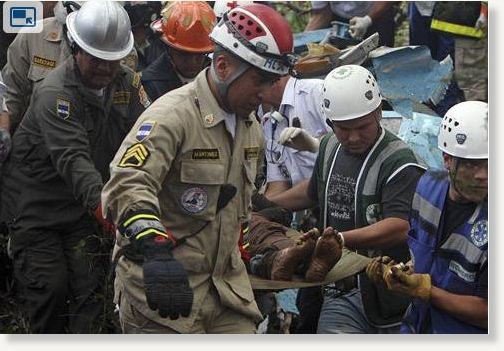
The Central American Airlines plane was flying to the Toncontin international airport in Tegucigalpa when it crashed Monday morning in the town of Las Mesitas, about three miles (five kilometers) south of the airport.
The cause of the crash is being investigated, but there was fog in the area at the time. Tincontin airport is considered dangerous because of its short runway and surrounding hills.
The Let L-410 Turbolet was carrying two pilots and 12 passengers, including Assistant Secretary for Public Works Rodolfo Rovelo, United Workers Federation of Honduras leader Jose Israel Salinas and former Economy Secretary Carlos Chain, said airline manager Felix Pacheco.
"I'm destroyed, in shock, because of what happened," Pacheco said, adding that it was a regularly scheduled daily flight.
The government declared three days of national mourning in honor of the government officials killed.
A pilot survived the crash but died on the way to a hospital, firefighters spokesman Jaime Silva said.
The National Service of Civil Aviation said the accident happened a little after 8 a.m. (8 a.m. ET; 1300 GMT), minutes after air traffic controllers instructed the pilots to land.
Jorge Deras, mayor of the town of Santa Ana, near Las Mesitas, said he heard an explosion and ran to the crash site.
"We found many ... bodies strewn about," Deras said. "It's a tragic vision."
At least 10 planes have crashed in and around the Toncontin airport since October 1989, when a Honduran commercial jet went down, killing 131 people.
Toncontin's short runway, old navigation equipment and neighboring hills make it one of the world's more dangerous international airports. It was built on the southern edge of hilly Tegucigalpa in 1948 with a runway less than 5,300 feet (1,600 meters) long.
Source: The Associated Press



Reader Comments
to our Newsletter